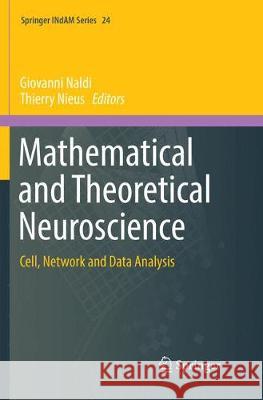Mathematical and Theoretical Neuroscience: Cell, Network and Data Analysis » książka
topmenu
Mathematical and Theoretical Neuroscience: Cell, Network and Data Analysis
ISBN-13: 9783030098285 / Angielski / Miękka / 2018 / 253 str.
Mathematical and Theoretical Neuroscience: Cell, Network and Data Analysis
ISBN-13: 9783030098285 / Angielski / Miękka / 2018 / 253 str.
cena 563,56
(netto: 536,72 VAT: 5%)
Najniższa cena z 30 dni: 539,74
(netto: 536,72 VAT: 5%)
Najniższa cena z 30 dni: 539,74
Termin realizacji zamówienia:
ok. 22 dni roboczych
Bez gwarancji dostawy przed świętami
ok. 22 dni roboczych
Bez gwarancji dostawy przed świętami
Darmowa dostawa!
Kategorie:
Kategorie BISAC:
Wydawca:
Springer
Seria wydawnicza:
Język:
Angielski
ISBN-13:
9783030098285
Rok wydania:
2018
Dostępne języki:
Numer serii:
000448067
Ilość stron:
253
Oprawa:
Miękka











